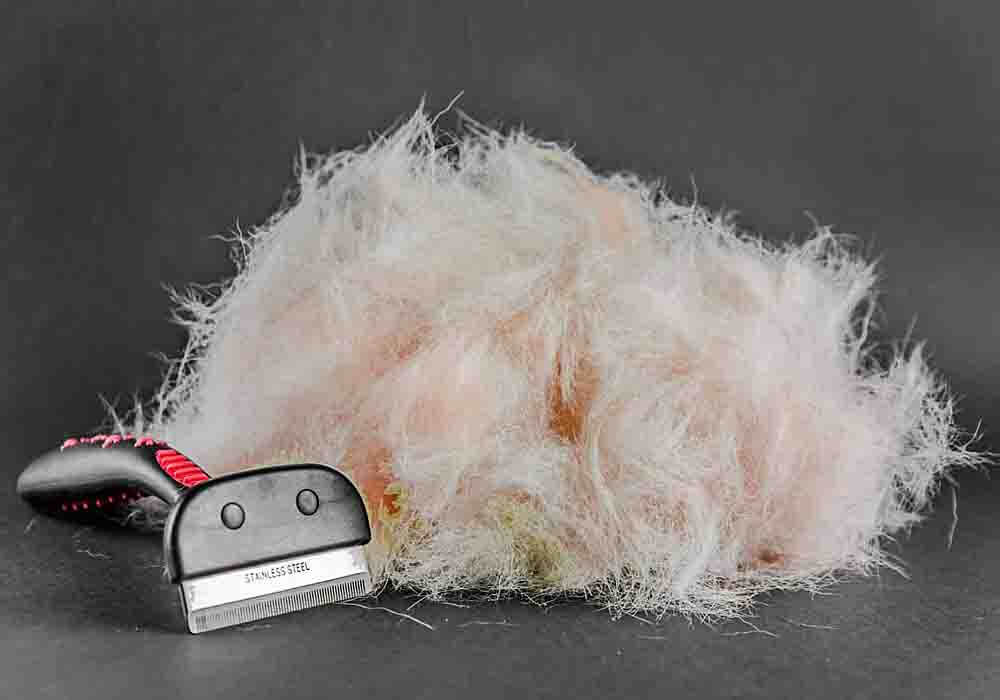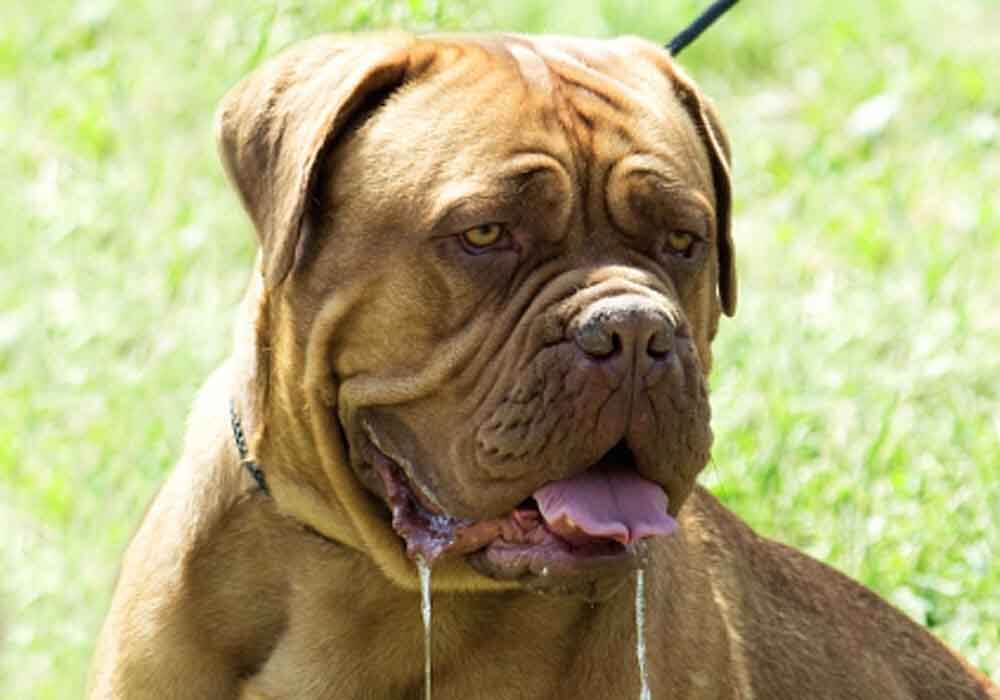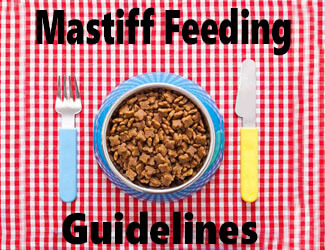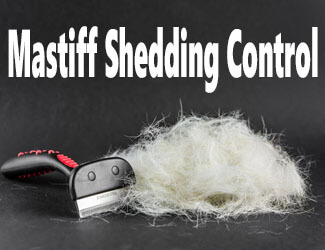Female Mastiff Heat
Cycle
Helpful Guide From Puppy to Adult
by Ken Alden
Knowing the female Mastiff heat cycle isn't only
necessary when breeding your dog. It's also associated with various benefits
that can help your pet reach full maturity. However, you should steer away from
the "generalized" heat cycle guides and focus on how it actually
works for this dog.
What Is The Female Mastiff Heat Cycle?
The heat cycle for this breed starts anywhere from 6 to 12 months old. It lasts for 2 to 4 weeks then repeats after every 4 to 10 months, with 6 months being the average interval for each cycle. In between these cycles, you'll notice several changes in her habits, characteristics, and behavior.
There are a lot of other things that you need to know about your dog's heat cycle, but we'll discuss everything about it in great detail. Stick around to learn more about the things that you can expect when in heat, the tell-tale signs, and other vital information about your dog's heat cycle. Read More Below...
Pro-tip: Ever try lifting a Mastiff? Their weight can hurt not only your back but their joints when they hop down from cars, sofas or even your bed. To protect your back and theirs check out the best Mastiff ramps on Amazon.com now.
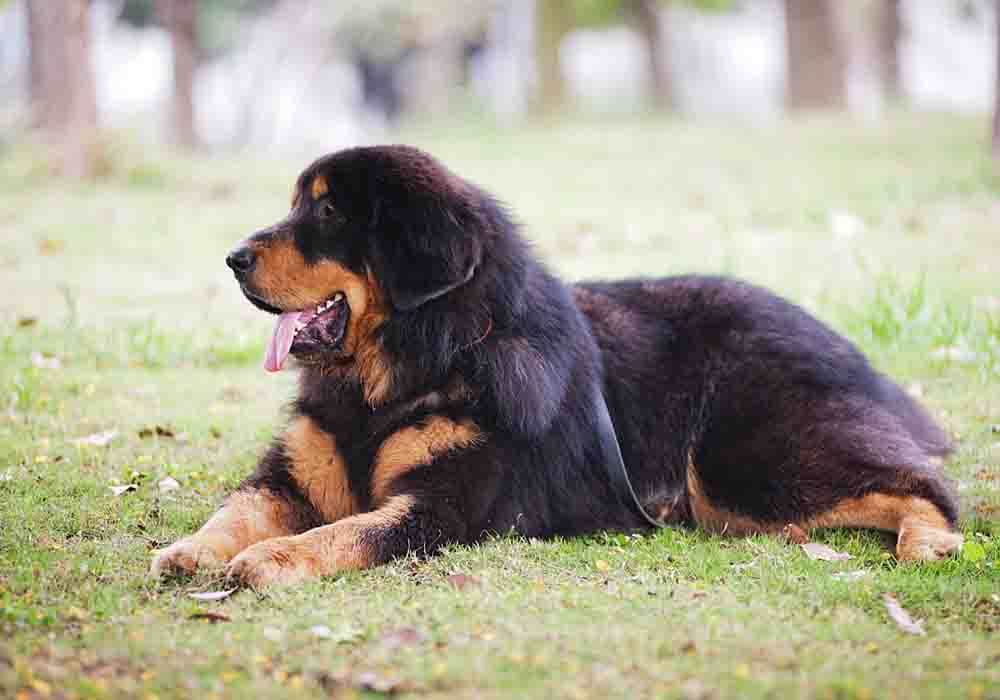
Mastiff Puppy’s First Heat: What to Expect
Well, congrats for your puppy's first heat! Exciting times, no doubt. But what can you expect during your puppy's first female Mastiff heat cycle?
There are four phases of a heat cycle, all of which are associated with various changes in her body and behavior towards you or other dogs. So to help you deal with her first heat, here are the phases that she'll go through:
- Proestrus is the initial stage of a heat cycle and is where your puppy's body and behavior start to change—all geared to prepare her for mating. The tell-tale signs that your dog is in this stage include, swollen vulva with excessive licking, blood-tinged discharge, and unusual aggression towards male dogs.
- Estrus is the stage where she starts to become receptive to males and ready to mate. When your dog enters this phase, you'll notice an unusual frequency in urinating. She may still be aggressive towards dogs, but this time, with females.
- Diestrus is the phase where your dog starts to return to normal—vulva returns to its normal size, vaginal discharge stops, and her attitude towards other dogs returns to normal. It's where pregnancy usually starts, but if it's her first cycle, you should let it pass to avoid stunting her growth.
- Anestrus is the inactive phase;
everything is back to where it was before the cycle started. It's worth noting,
though, that there are instances when dogs still get pregnant during this
period. Stay safe and try to keep her away from other dogs for a few more days
after everything goes back to normal.
At What Age Do Mastiffs Go Into Heat?
The age when Mastiffs go into heat varies a lot! In most breeds, the first heat cycle starts in about 4 to 6 months. For Mastiffs, however, the first heat cycle begins anywhere from 6 to 11 months. There are even some owners who reported that their dog's first cycle started at one year old!
If a Mastiff entered her first heat cycle after one year, it doesn't mean that it's safe for her to mate. This dog has a long puppy stage, so regardless of the time that your pet took to get in her first heat, you still need to follow the general rule: breed after the second or third heat cycle.
5 to 6 months is a huge window to watch over
your dog just to see her go into her first heat. This task becomes more tedious
if you're unaware of the changes that happen when your dog enters her first
cycle. So the best way to prepare for it is to know the tell-tale signs that
your dog is in heat.
This helpful article will tell you even more about when do Mastiffs go into heat.
Pro-tip: Mastiff anxiety, aggression, destructive chewing, jumping up, fearfulness, and other behaviors can be controlled with the right training program.
Here’s a great course that
addresses these issues along with many other dog training basics: Check it out now!
How to Tell if Your Mastiff Is in Heat
The changes that happen during a heat cycle may vary, but there are surefire ways to determine whether your dog is already in heat or just going through growth adjustments. Here are the physical and behavioral changes that your dog will go through when she's in heat:
- Swollen vulva or the outer part of her genitals. It'll last for a few weeks, then returns to normal when she enters her diestrus stage.
- Blood-tinged discharge from the vulva during proestrus that changes to straw-colored discharge during the diestrus stage.
- Noticeably agitated, nervous, or aggressive towards people.
- Aggressive towards male dogs when preparing to mate. When ready, she'll become more receptive to males but aggressive towards females.
- Excessive licking of the genital area.
- Unusual frequency in urination. Female dogs use their urine to "tell" male dogs that they're ready to mate.
It can be alarming when your pet starts to
show these signs for the first time, but it's normal for every dog. You also
need to remember that you'll notice all of these changes throughout her cycle
and will continue until she enters the anestrus stage.
How Long Are Mastiffs in Heat?
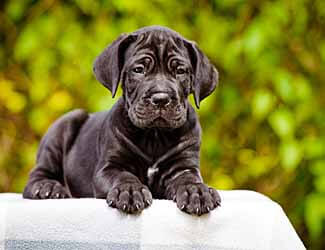
The heat cycle lasts anywhere from 2 to 4 weeks, which could be a huge window to watch over your pet. Since every dog will go through this stage differently, depending on their genetic makeup and age, the signs that your dog will be, or is in, heat are the best markers that you can use.
If you're trying to avoid early pregnancy, keep your dog away from males even after the anestrus period. However, if you're trying to breed your Mastiff, it would be best to mate her when she's at the peak of fertility. It starts within nine to ten days after the proestrus stage begins. This peak lasts for five days; then it slowly dwindles back to normal.
Pro-tip: Mastiff's (and their owners) love dog crates…and for good reasons. Crates keep dogs from mischief while you're away, are perfect for house training, for traveling by car, and provide the dog a place to de-stress. Check out the best Mastiff crates on Amazon.com now.
How Often Do Mastiffs Go Into Heat?
Mastiff's first heat will happen anywhere from 6 months to 11 months, and from there, it'll recur every six months throughout her lifetime. But that's on average. Of course, heat cycles vary, especially in the early stages of life—it can even start at 12 months with a 10-month interval. As your dog ages, these cycles become closer to the average.
Since it's impossible to predict when your
dog's first cycle will start, and the first few recurrences of her cycle, it's
important for breeders to understand the phases and changes that may happen
during this period. It can be nerve-wracking for the first few cycles, but as
you get to know your dog's "body clock," monitoring her heat cycle
becomes easier.
Can a Mastiff Stay in Heat?
Yes. Even if the bloody discharge stops and the vulva returns to normal, it's still possible for your dog to get pregnant. Cycles will occur throughout your pet's lifetime, so without spaying, you'll have to monitor your dog's activities before and after every female Mastiff heat cycle.
It's one reason why owners who don't intend to
breed their Mastiffs, have their dog spayed. Not only does it help in
preventing various health risks, but it also frees you and your dog, from the
troubles of monitoring her cycles and keeping her in check.
Female Mastiff Heat Cycle...Final Thoughts
Heat cycles for Mastiffs can be quite tricky to predict because they don't go through it like most dogs. However, knowing the signs when your pet is in heat will help you monitor her development. It'll also help you learn more about your dog's heat, including the length and intervals of each cycle, and the peak of her fertility.
Remember, these are the most common signs that you'll see when a Mastiff is in heat:
- Swollen vulva or the external part of her genitals.
- Blood-tinged or straw-colored discharge from the vulva.
- Agitated, nervous, or aggressive towards people.
- Varying behavior towards other dogs throughout the cycle.
- Excessive licking of the genital area.
- Unusual frequency in urination.

About the Author...
Ken Alden, a dedicated Mastiff owner for over eight years, is acclaimed for his expertise in care, grooming, and training. Read more About Me and my dog Shadow.
- Mastiff Guide Home ›
- Mastiff Dog Info ›
- Female Mastiff Heat Cycle
